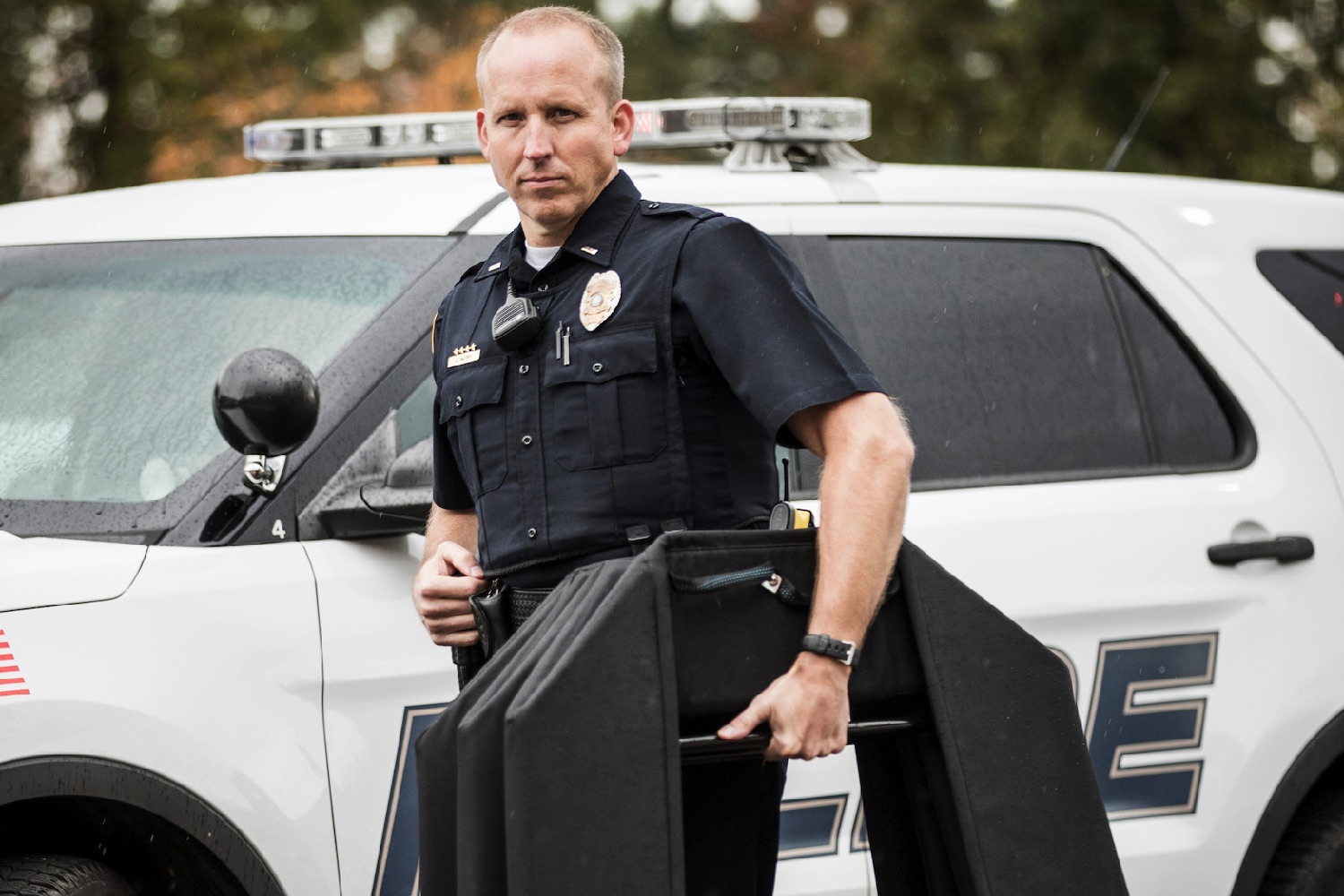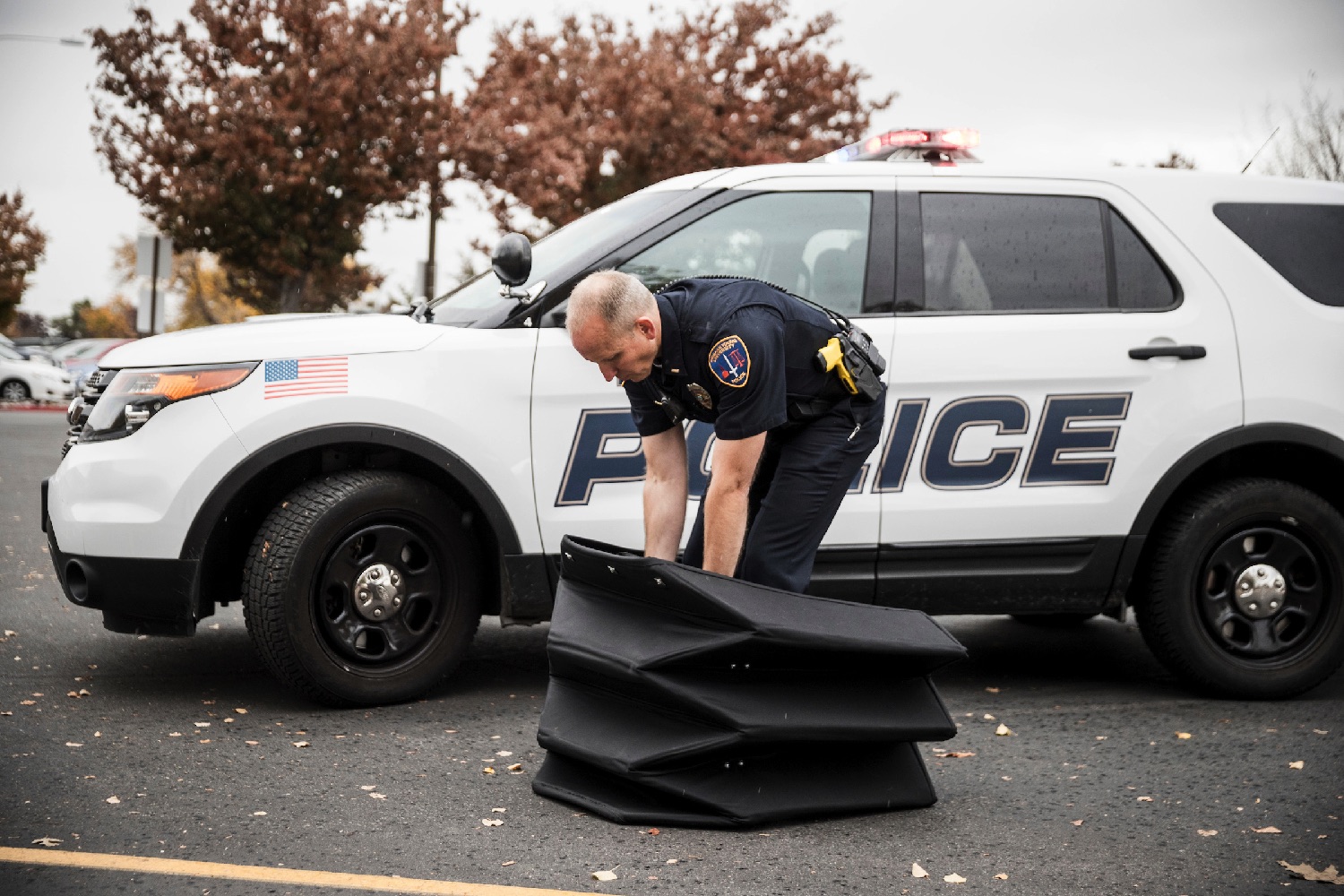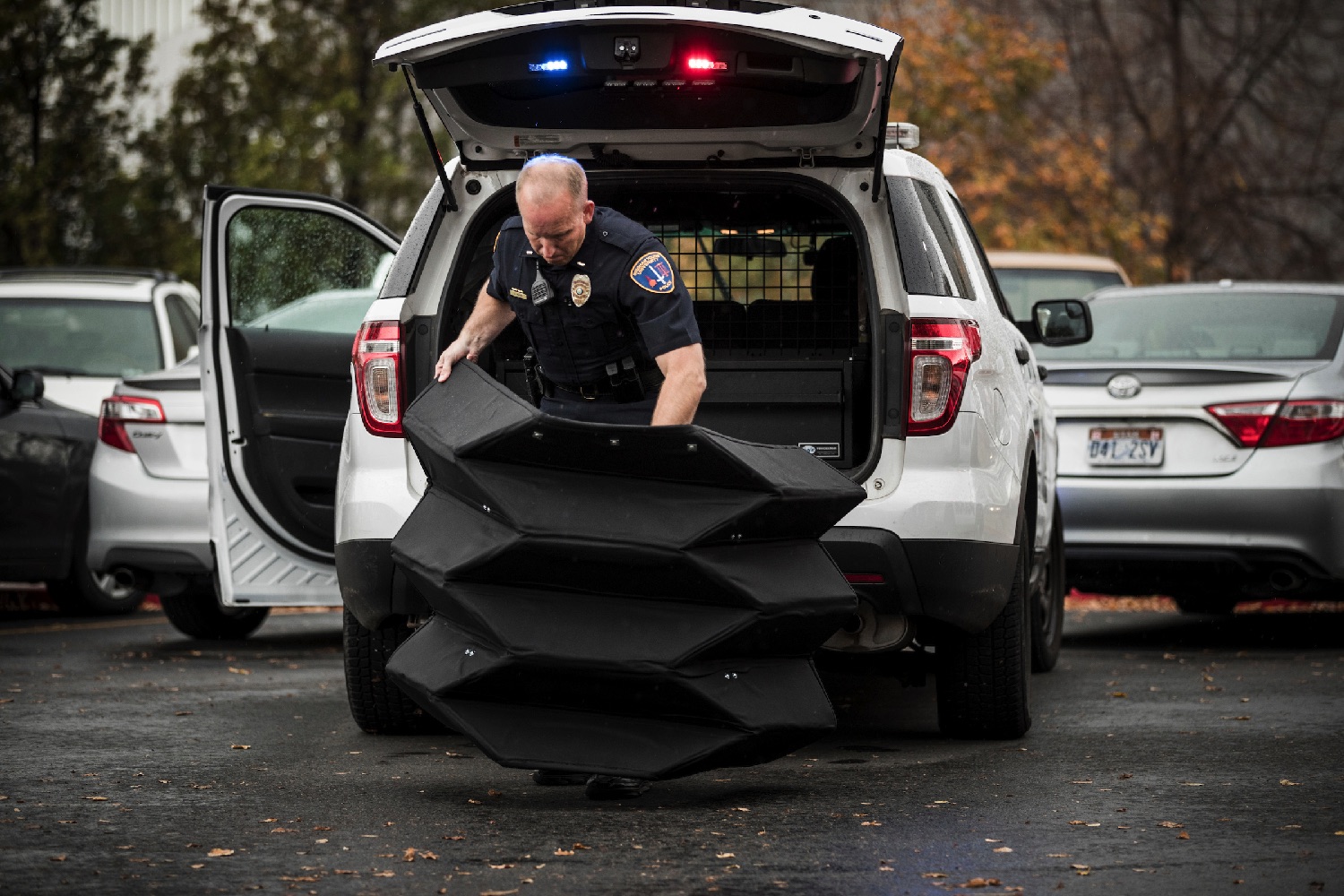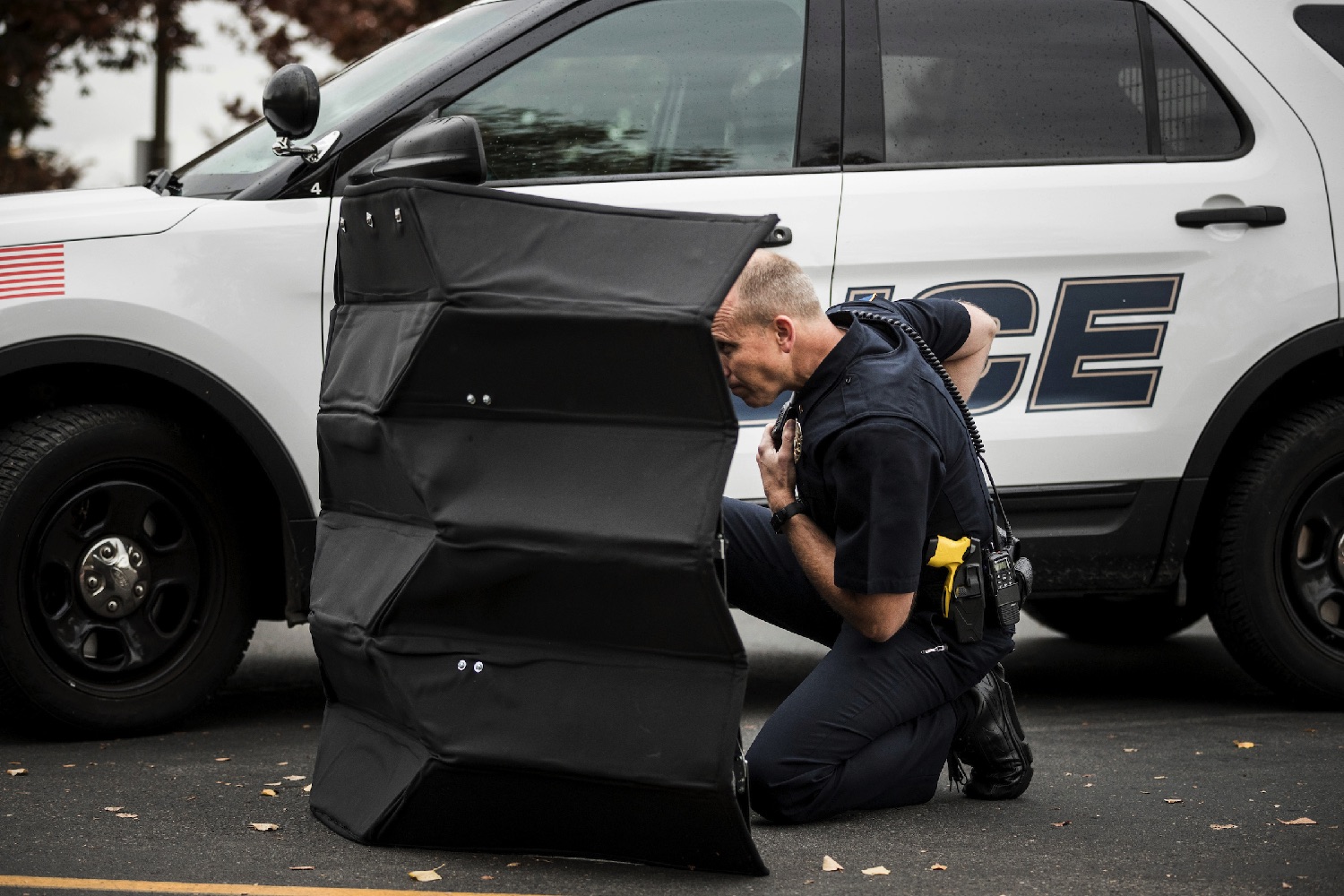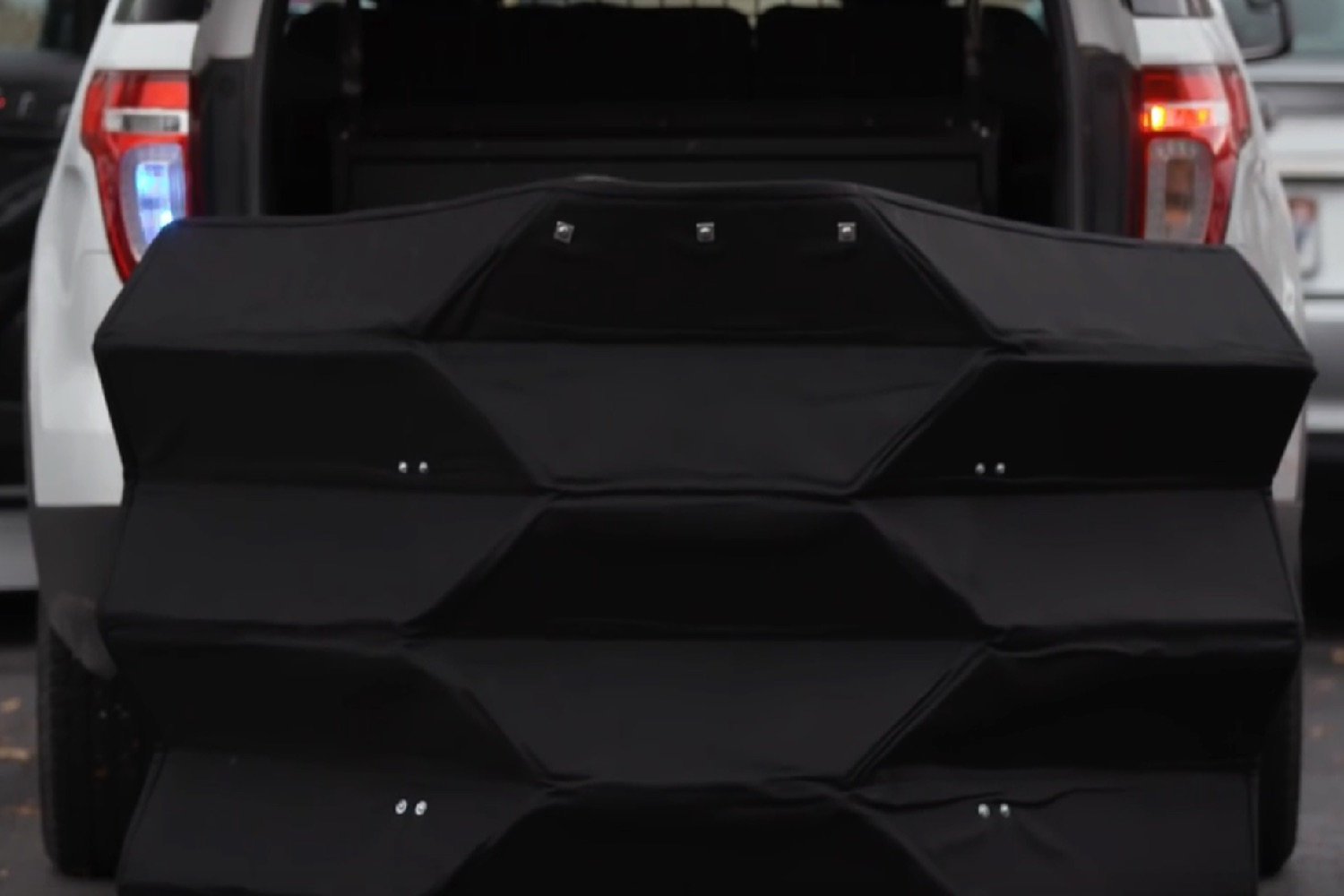That may be about to change, however, courtesy of a new research project coming out of Utah’s Brigham Young University. What engineers at BYU have developed is an origami-inspired, lightweight bulletproof shield designed to protect officers from gunfire.
“Our lab has been looking at different origami-based concepts,” Larry Howell, professor of mechanical engineering, told Digital Trends. “For example, we’ve previously worked with NASA to create deployable space systems that are very compact for launch, and which can then expand in space. We’ve also worked on surgical applications, where you could get something to enter the body through a small incision, and then unfold to carry out complex tasks. However, the idea of using this research to create a barrier was a new opportunity for us.”
Created by the university’s Compliant Mechanisms Research group, the Kevlar barrier is a freestanding shield structure, which can be erected in just a matter of seconds. It is built with 12 layers of Kevlar, which are fused together with a thin aluminum core in the center, based on an origami fold pattern called Yoshimura. This is ideal because not only does it open quickly, but it also has a curved shape that protects from both the front and sides.
In testing, the shield was shown to be able to stop bullets from several common handguns.
“In an emergency situation, the origami shield can be transported easily in the trunk of a car, carried to the location, and deployed quickly to protect two to three officers,” Terri Bateman, adjunct professor of engineering at BYU, told Digital Trends. “Other products on the market are heavier — up to 90 pounds — must be held up by the user, and are flat. During the development process, the professors and students in our lab were highly motivated by the thought that this product could save lives.”
The next step is to further refine the shield, and make improvements so it can be easily manufactured. There are also other variations the team is interested in developing such as a smaller model for an individual officer, or ones that could potentially be used in public buildings (such as schools) to protect inhabitants in the case of a shooting.
